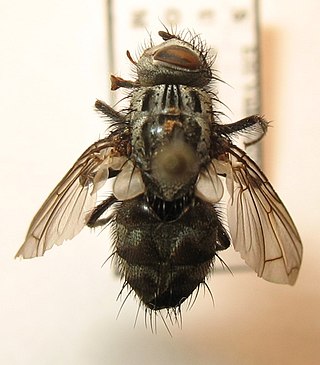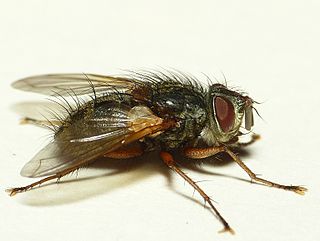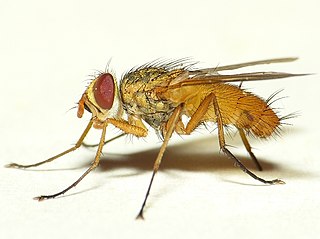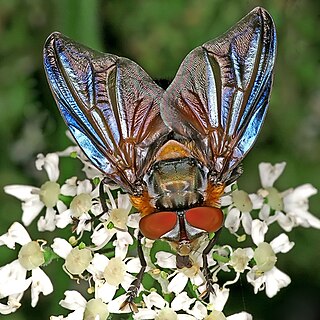Meigenia is a genus of flies in the family Tachinidae.
Neaera is a genus of flies in the family Tachinidae.
Aphria is a genus of fly in the family Tachinidae.

Billaea is a genus of flies in the family Tachinidae. Most larvae, where known are parasitoids of Coleoptera or Lepidoptera (Pyralidae)

Phryno is a genus of flies in the family Tachinidae.

Phyllomya is a genus of flies in the family Tachinidae.

Siphona is a genus of flies in the family Tachinidae.

Medina is a genus of flies in the family Tachinidae.

Leskia is a genus of flies in the family Tachinidae.

Lydella is a genus of flies in the family Tachinidae. Lydella thompsoni can be used in the UK for the biological control of the European corn borer.

Macquartia is a genus of flies in the family Tachinidae.

Actia is a genus of large flies in the family Tachinidae.

Chrysosomopsis is a genus of flies in the family Tachinidae.

Exoristinae is a subfamily of flies in the family Tachinidae. Most species are parasitoids of caterpillars.

Phasiinae is a subfamily of flies in the family Tachinidae. Except for the small tribe Strongygastrini members of this subfamily attack only Heteroptera.

Tachininae is a subfamily of flies in the family Tachinidae.

Leskiini is a tribe of flies in the family Tachinidae.

Dexiosoma caninum is a European species of fly in the family Tachinidae. In the United Kingdom, the species can most commonly be found during the summer in the south of England.

Minthoini is a tribe of flies in the family Tachinidae.

Aphantorhaphopsis is a subgenus of flies in the family Tachinidae. Some consider this to be a subgenus of Siphona, most European workers seem content that this is a genus in its own right. They are known from the Palearctic, Afrotropical and Oriental regions.

















